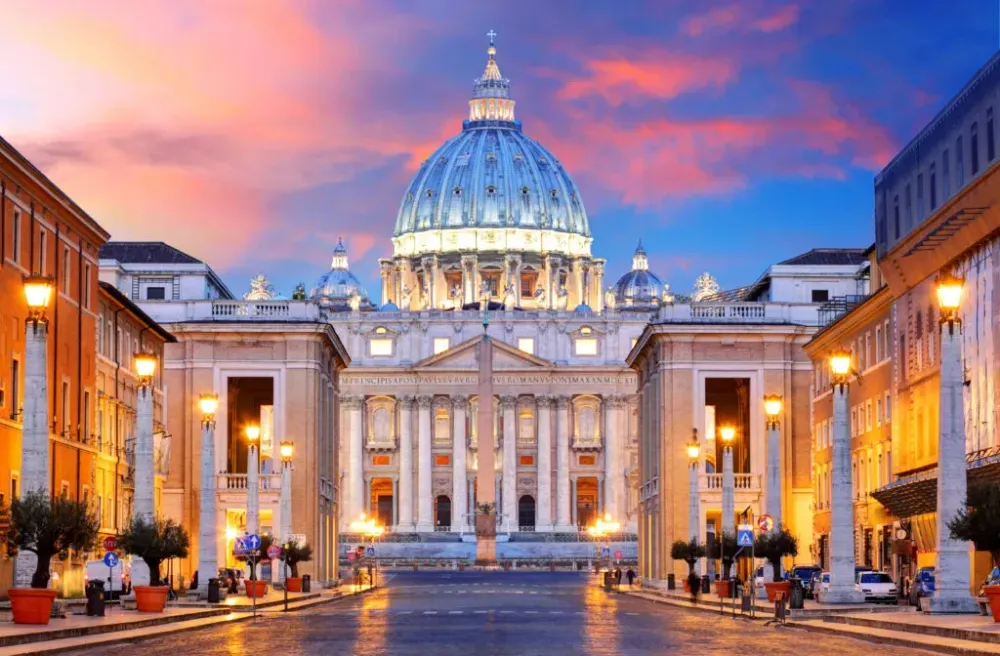The Best Time to Visit Italy to Avoid Crowds

-
The Best Time to Visit Tuscany
-
The Best Time to Visit Venice
-
When to Visit Rome
-
When to Visit North/Central Italy
-
When to Visit the Italian Alps and Vatican City
-
When to Visit Southern Italy
Italy is a dream destination for many people, and the most popular spots in the country can get extremely crowded during peak season. Plan your trip accordingly if you don’t want to spend your vacation waiting in lines.
For Italian tourism, the year is divided into seasons. In the summer, almost any place in Italy will be busy. Experienced travelers have found that the least hectic time to visit Italy is during the winter. Except for the Italian Alps (where skiers will flock as soon as “powder” begins whitening the slopes in December), the best choice for avoiding crowds will be the winter months: November through February.
However, if you want to visit Italy while it’s still warm, plan your trip during the shoulder season in spring or fall, when crowds are typically smaller.

Tuscany is a popular destination, so the best time to visit to avoid crowds is between November and March. The groups begin to disappear, and there are lower prices. The temperatures in Tuscany will be chilly, ranging from 38-45 degrees, but there are still cozy restaurants to enjoy and fun outdoor activities like hot springs.

Venice is almost always crowded, but there are times and places when you’ll find less traffic. The northern lagoon of Venice is more serene than downtown—and, in November, it will be a retreat from the crowded cities. Known as Laguna di Venezia, it’s the home of San Francesco del Deserto. Travelers seeking peace can find it at this secluded little convent and garden.
Although Venice remains less crowded through December, its waterways are fickle. It’s difficult to predict when Venice's water will rise too high. At the end of the “shoulder season” in Venice, the water will sometimes rise higher than average. The Italians call those floods “Acqua Alta” (high water).

Rome is the most popular tourist destination, so finding a time without crowds can be difficult. Some travelers have found November in Rome to be cold but affordable. November is also when you can comfortably climb the Seven Hills or stroll through the piazzas without breaking a sweat.

August and September are good months for truffle lovers, and Piedmont and LeMarche are regions where you can successfully find them—but there also may be crowds who come for the cuisine. Visiting in fall and winter will give you more space and better deals, and there are plenty of indoor activities to enjoy while you’re there, like wine tasting in Bartolo.

If you’re determined to ski in the Italian Alps, the first two weeks of December are often the least crowded time as the snow isn’t yet at peak conditions. However, stay away from the slopes on the weekends when Italians flock there after a week of work.
Tourists seeking a religious pilgrimage often choose to visit Vatican City. However, to avoid crowds, you should avoid visiting the Vatican near the times of any religious holidays. No matter what time of year you go to the Vatican, remember it’s closed on Sundays (except for the last Sunday of the month).

As in much of the country, the winter months see fewer crowds, beginning as early as November. Unlike the northern regions, snow is uncommon here, with temperatures rarely dipping below 50 degrees Fahrenheit.
Near the southern coast, you’ll find Ostuni, a town surrounded by medieval walls that tends to be less-visited. Ostuni is sometimes called “The White Town” because of the pristine white walls of its buildings. Those white walls stretch across three hills and provide plenty of photo opportunities. While you’re there, travel a bit north to the inspiring tower of Saint Orontio.
